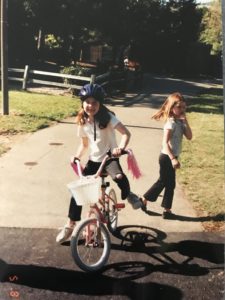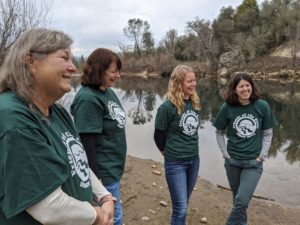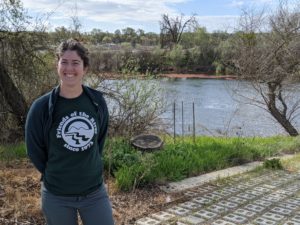Burn it Down…and Let it Rise like a Phoenix from the Ashes.
by Maggie Shepherd

I started the River Advocacy Training school (RATS) with Friends of the River with essentially a blank slate on water policy because my family isn’t originally from California or river people in particular. I grew up in the Bay Area suburbs with the conventional environmental guilt indoctrination. I grew up with the story that I needed to be careful brushing my teeth, to never run the sprinklers midday and, yes, that SoCal is a sprawling place that stole our water. Reading Cadillac Desert exposed this childhood story as a lie. I felt betrayed to learn about the roots of the seemingly ever-present water crisis and the system that–of course–is set up for the wealth of a few white men. Big Agriculture came out as the Big Villain in the story, with cities holding less guilt than I’d thought.
At RATS training, I felt overwhelmed and trapped by the policy tangle. It’s a nightmare. There is a feeling of stagnancy; the current system is not working for the changing climate. Unsurprising, since it was set with faulty ecological principles and has not been working for a long time. On the flip side, I found a burning optimism from a presentation of how to rebuild urban infrastructure to create optimised usage with graywater recycling and electricity microgrids. Thinking outside the box to apply innovation and engineering conserves water and energy, and therefore money and environmental impact. Yet still political players seem determined to continue rehashing the same policy schemes.
 In the project of reaching out to business owners about the connection between thriving ecosystems and economics, I talked with a rancher who reflected my own conflicted feelings. She faces the challenge of aging neighbors whose livelihoods do not depend on their farms and struggle to maintain their irrigation, even though blockage affects surrounding land. The farms in the area depend on surface irrigation for most of their water. Her ranch sells pork, wool and other products at farmers markets, but making a living is tough. Even so, she sounded inspired about her work with the council, which is trying to bolster native beaver populations to preserve river habitat and create natural watersheds in their local area. This rancher spoke passionately about improving irrigation infrastructure and soil health, but she was cautious—she wanted to make sure that Friends of the River actually cared about small farmers. She seemed familiar with the demonization of agriculture and ranching. It was energizing to talk to someone who shared a passion for investing in long-lasting health for land and rivers and disheartening that she didn’t feel supported.
In the project of reaching out to business owners about the connection between thriving ecosystems and economics, I talked with a rancher who reflected my own conflicted feelings. She faces the challenge of aging neighbors whose livelihoods do not depend on their farms and struggle to maintain their irrigation, even though blockage affects surrounding land. The farms in the area depend on surface irrigation for most of their water. Her ranch sells pork, wool and other products at farmers markets, but making a living is tough. Even so, she sounded inspired about her work with the council, which is trying to bolster native beaver populations to preserve river habitat and create natural watersheds in their local area. This rancher spoke passionately about improving irrigation infrastructure and soil health, but she was cautious—she wanted to make sure that Friends of the River actually cared about small farmers. She seemed familiar with the demonization of agriculture and ranching. It was energizing to talk to someone who shared a passion for investing in long-lasting health for land and rivers and disheartening that she didn’t feel supported.
 Current water laws and systems do not make sense and still, driven advocates fight small-scale battles. Frustrated, when I expressed wanting to tear it down and start anew, I faced the sunk cost effect from my peers: “I don’t want to give up on the policies and approaches I’ve been working so hard on for so long,” to paraphrase. It is hard to see how a badly needed system overhaul will come from a microscopic approach to moving forward. But I am encouraged by people coming from different places fighting for a secure ecological water future for California — and coming from love. Without innovation and new vision, is the conflict and distrust ever going to lead to a resilient water future for California?
Current water laws and systems do not make sense and still, driven advocates fight small-scale battles. Frustrated, when I expressed wanting to tear it down and start anew, I faced the sunk cost effect from my peers: “I don’t want to give up on the policies and approaches I’ve been working so hard on for so long,” to paraphrase. It is hard to see how a badly needed system overhaul will come from a microscopic approach to moving forward. But I am encouraged by people coming from different places fighting for a secure ecological water future for California — and coming from love. Without innovation and new vision, is the conflict and distrust ever going to lead to a resilient water future for California?
